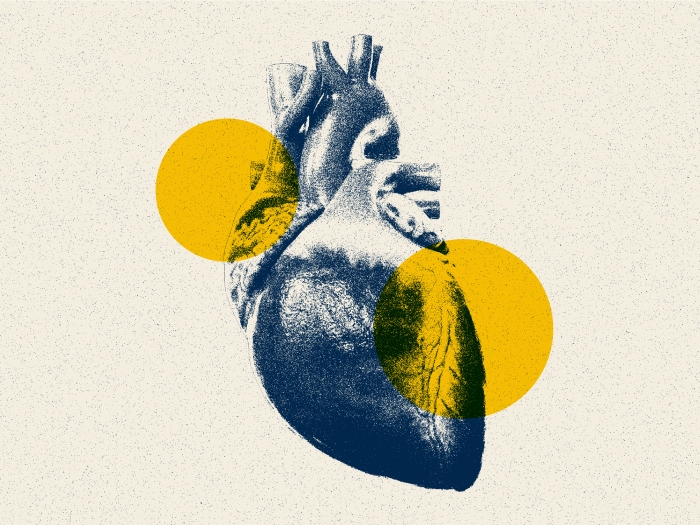Cardiovascular disease is the most significant health risk impacting these populations, yet, many don’t know it.
11:32 AM
Author |

This article was updated Feb. 7, 2022.
More than one in three women in the United States are living with some form of cardiovascular disease, with heart disease being the leading cause of death for many.
But cardiovascular disease has a disproportionate effect on some women more than others. Forty-nine percent of Black women ages 20 and older experience heart disease and are more likely to endure heart disease-related deaths at earlier ages. On average, Hispanic women are more likely to develop heart disease 10 years earlier than non-Hispanics. Heart disease is also the second leading cause of death among the Hispanic population in the United States after cancer.
So, why are Black and Hispanic women being disproportionately affected by cardiovascular disease?
Disproportionate barriers to making lifestyle changes
The reality is that lifestyle changes, things like food, exercise and self-care practices that decrease your risk of cardiovascular disease, are greatly connected to your access to a social and physical environment that promotes good heart health.
For many marginalized communities, however, access to these necessities has been historically complicated by systematic and institutional racism and discrimination. These systemic inequities result in what are known as social determinants of health, or conditions in which people live, that have negatively impacted quality of life, health risk and outcomes for entire communities.
With the added variables of sex and gender, women of color are especially vulnerable to health inequities, as reflected in the extreme rates of cardiovascular disease and risk factors in Black and Hispanic women.
The National Heart, Lung and Blood Institute, a division of The National Institutes of Health, found that more than 80% of mid-life Black women and 77% of Hispanic women are categorized as overweight or obese, compared with 63% of white women. The same report additionally found that 46% of Black women and 31% of Hispanic women in the U.S. are living with high blood pressure, another significant risk factor for cardiovascular disease.
It can be difficult for people without additional barriers to healthy eating to maintain a heart healthy diet, and for those who live in a food desert, a circumstance experienced by many in marginalized communities, managing weight can be made significantly more difficult, as nutritious food can be harder to access.
If the only options available to buy food in a person's neighborhood are fast food restaurants and convenience stores that carry foods high in saturated fats, trans fats and sugar, it may contribute to unhealthy eating patterns. These roadblocks to easily accessing a healthier diet can negatively influence cholesterol levels and increase a person's risk for developing high blood pressure.
Hurdles getting routine physical activity
Physical activity could offer some recourse against extra calories and risk factors. However, it's middle-class neighborhoods, which are more likely to be predominately white, that have more gym facilities, organized programs and safe, green, walkable spaces available to exercise.
Without these types of recreational spaces for diverse communities, nearly 14% of Black women and 13% of Hispanic women develop diabetes from a lack of physical activity and a poor diet, compared with about 7% of whites.
Unsupported self-care
The idea of self-care is a culturally taboo one for Black and Hispanic women. In both Black and Hispanic cultures, women are often called upon to be the caregivers for children, partners, parents, and extended families, sometimes on their own, while also working and maintaining relationships, leaving little to no time to prioritize routine care, diet and exercise. This amount of responsibility can also create a greater exposure to chronic stress that further exacerbates risk factors for cardiovascular disease.
Systemic inadequacies in equal access to care
In the U.S., people in marginalized racial and ethnic groups often face difficulty in having equal access to health care. These barriers to access can exist at multiple systemic levels and can be impacted by economic status, from factors such as access to transportation, childcare or the ability to take time off of work for medical appointments, to in some cases having lower rates of being insured (which can lead to reduced access to the care and medications they need.) Additionally, for people whom English is their second language, interpreter services are needed, or the patient-provider interaction and the quality of care they receive suffers as a result.
It's also important to note that people in marginalized communities may be distrustful of the health care system as a result of several historic examples of exploitation at the hands of doctors and medical researchers, resulting in a reluctance to seek out medical services.
According to the American Heart Association, in comparison to 65% of white women, only 36% of Black women and 34% of Hispanic women are aware of cardiovascular disease being among their most significant health risks.
Understanding how social determinants of health impact access to health care and creating culturally sensitive approaches to raise awareness in these communities is of supreme importance in addressing the disparity in the rates of cardiovascular disease these populations face.

Explore a variety of healthcare news & stories by visiting the Health Lab home page for more articles.

Department of Communication at Michigan Medicine
Want top health & research news weekly? Sign up for Health Lab’s newsletters today!





